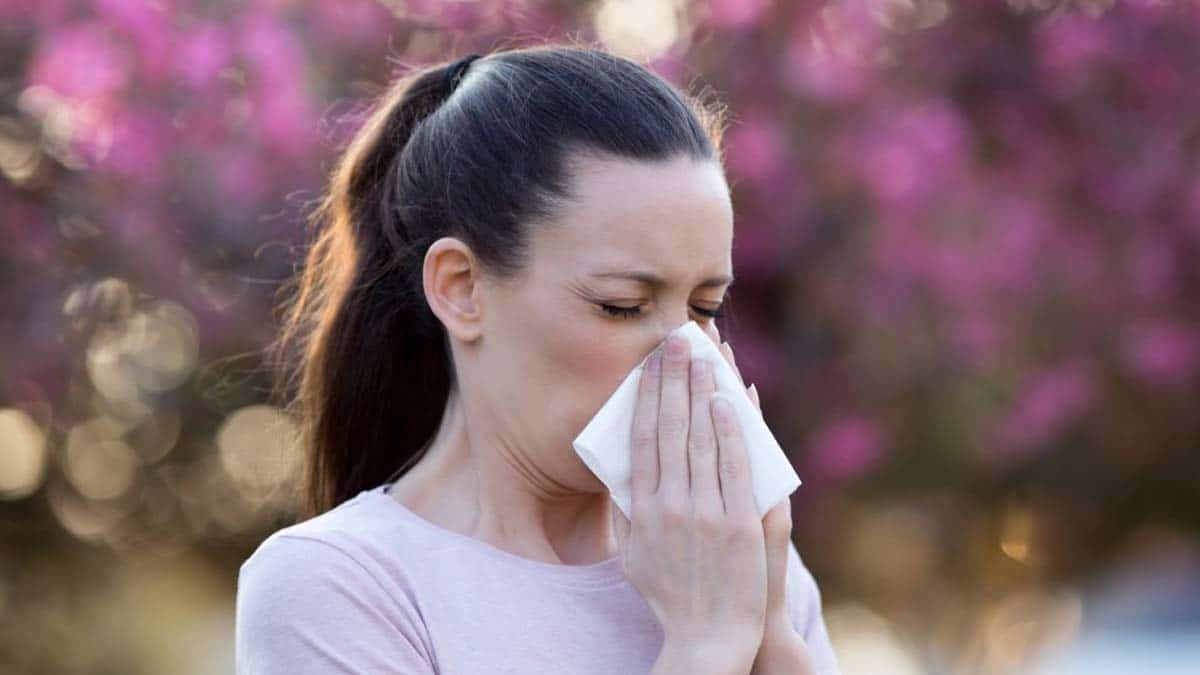Against pollen allergies, here is a 100% natural remedy. To fight against hay fever, a food that everyone has in their kitchen works wonders.
The nose runs, the eyes water, the throat scratches. The symptoms of pollen allergies are numerous. If medical aids are used by those most concerned among us, there is a particularly effective remedy for hay fever. While some talk about essential oils to fight against this allergy, it is important to highlight a food, a citrus fruit to be exact, which can soften these very unpleasant symptoms.
A 100% natural remedy for pollen allergies

There is a 100% natural remedy: squeezed citrus juice. Indeed, the citrus fruit, or more particularly the lemon, makes it possible to calm allergies to pollen. In this yellow or green fruit, there is a high concentration of vitamin C. As Femme Actuelle explains, the latter blocks the secretion of histamine, which is responsible for allergies. Nevertheless, this vitamin is very fragile, explains Raphael Gruman, dietitian and nutritionist, to the media. Concrete example: let’s take an orange that contains vitamin C. Cut in half, it will have already lost almost half of its content, that is to say!.
It is therefore advisable, if the symptoms of an allergy persist, to consult a doctor for a treatment adapted to your needs.
🌼 #Pollen : are allergies linked to the return of spring? When do we risk a peak of rhinitis? What are the plants that tickle our noses? https://t.co/WQfIeSbToo
— Liberation (@libe) May 12, 2022
What is an allergy?
Simply put, an allergy is a failure of the immune system that occurs after injection, inhalation, but also skin reaction to a foreign substance. Thus, this allergic reaction, which results in the production of antibodies, will cause asthma, conjunctivitis, eczema or even hay fever in a person.
For all these reasons, it is important to find medical or natural solutions to this failure of the immune system.
What is a pollen allergy?
Pollen is a very fine powder produced by trees, flowers, grasses and weeds to fertilize other plants of the same species. It is also one of the most common causes of allergies in the United States.
Many people have a negative immune reaction when they breathe in pollen.

The immune system normally prevents disease by defending the body against harmful intruders, such as viruses and bacteria.
In people with pollen allergies, the immune system mistakenly identifies harmless pollen as a dangerous intruder. The immune system begins to produce chemicals, including histamine, to fight the pollen.
This is called an allergic reaction, and the specific type of pollen that causes it is called an allergen. The allergic reaction leads to many irritating symptoms, such as sneezing, nasal congestion, and watery eyes.
Some people have allergy symptoms all year round, while others only have them during certain times of the year. For example, people sensitive to birch pollen usually have increased symptoms in the spring when the birch trees are in bloom. Similarly, people allergic to ragweed are most affected in early fall.
Once a person has developed a pollen allergy, it is unlikely to go away. However, symptoms can be treated with anti-allergy medications and injections. Certain lifestyle changes can also help relieve symptoms.
DID YOU KNOW ?
Pollen allergy can also be called seasonal allergic rhinitis or hay fever.
According to the National Health Interview SurveyTrusted Source, conducted by the Centers for Disease Control and Prevention, 7.2% of children and 7.7% of adults in the United States had hay fever in 2018.
Types of Pollen Allergies
There are hundreds of plant species that release pollen into the air and trigger allergic reactions.
Some common culprits are:
the birches
the Oaks
grass
ambrosia plants
Birch pollen allergy
Birch pollen is one of the most common airborne allergens in the spring. When birch trees flower, they release tiny pollen grains that are dispersed by the wind.
A single birch tree can produce 5.5 million pollen grains.
Oak Pollen Allergy
Like birches, oaks emit pollen into the air in the spring.
Although oak pollen is considered mildly allergenic compared to pollen from other trees, it stays in the air for longer periods of time. This can cause severe allergic reactions in some people with pollen allergies.

Grass pollen allergy
Grass is the main trigger for pollen allergies during the spring and summer months.
There are many types of grass. Only a few of them, such as perennial rye, Bermuda grass and bluegrass, are able to trigger allergies.
Ragweed pollen allergy
Ambrosia is the weed most likely to cause allergies. A plant can produce close to a billion pollen grains.
They are most active during the first months of autumn. However, depending on the location, ragweed can begin to shed its pollen as early as August and continue until November.
Wind-blown pollen can travel hundreds of miles and survive a mild winter.
